Audeze Maxwell
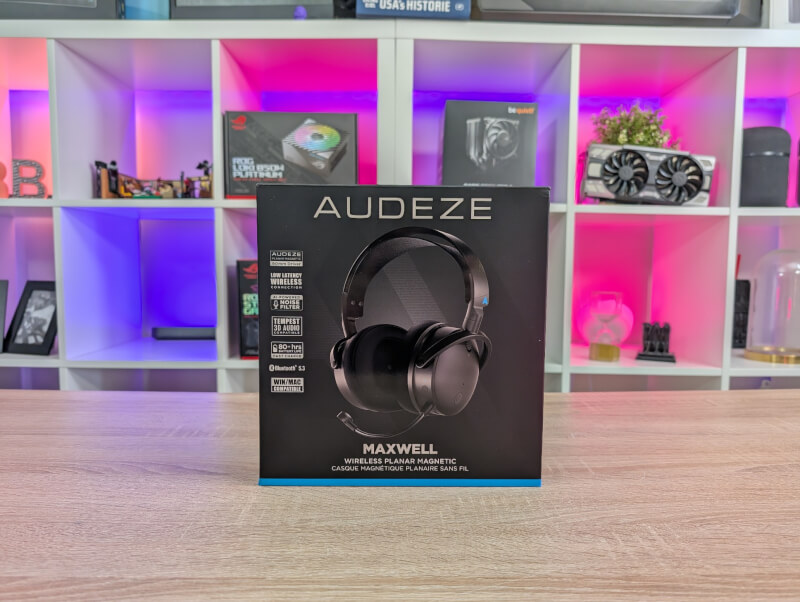
Central Specifications
- Style: Over-ear (circumaural), closed-back
- Transducer type: Planar Magnetic
- Magnetic structure: Fluxor™ magnet array
- Phase management: Fazor™
- Magnet type: Neodymium N50
- Diaphragm type: Ultra-Thin Uniforce™
- Transducer size: 90 mm
- Spatial Audio:
- Dolby Atmos® (Xbox Version)
- Tempest 3D (PlayStation Version)
- Boom Microphone: Detachable, Hypercardioid
The Maxwell headset is available in two versions, depending on whether you want compatibility with Xbox or PlayStation. This is due to the way the PlayStation and Xbox consoles handle wireless audio. However, both parts still support PC and Bluetooth 5.3. So if you don't play on console, it's not that important which version you choose.
We have been visited by the PlayStation version.
A tour around the Audeze Maxwell Wireless
The design of the Maxwell Wireless is kept in a very classic subdued style with large round ear cups. It is without flashy lyre or other details, and the only thing that stands out from the black/gunmetal gray color is a small Audeze logo in blue on the headband. The logo is green on the Xbox version.
The materials are a combination of plastic and metal and the whole thing feels comfortable and solid. The headband is not adjustable, like most headsets. Instead, there is a smaller headband in the headband that can be adjusted in three steps on each side.
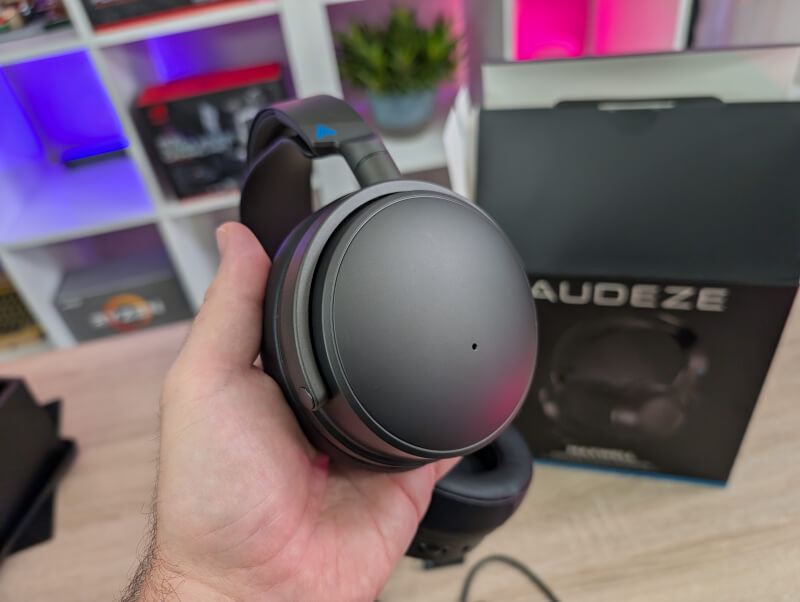
It is a somewhat cumbersome process, so if there are several people sharing the headset, it can quickly become annoying. When you only use it yourself, it doesn't mean much, since in most cases it is "set and forgotten" with the size.
Both earcups are round and large and can be rotated so that they can lie flat if you wear the set around your neck or lay it on a table.
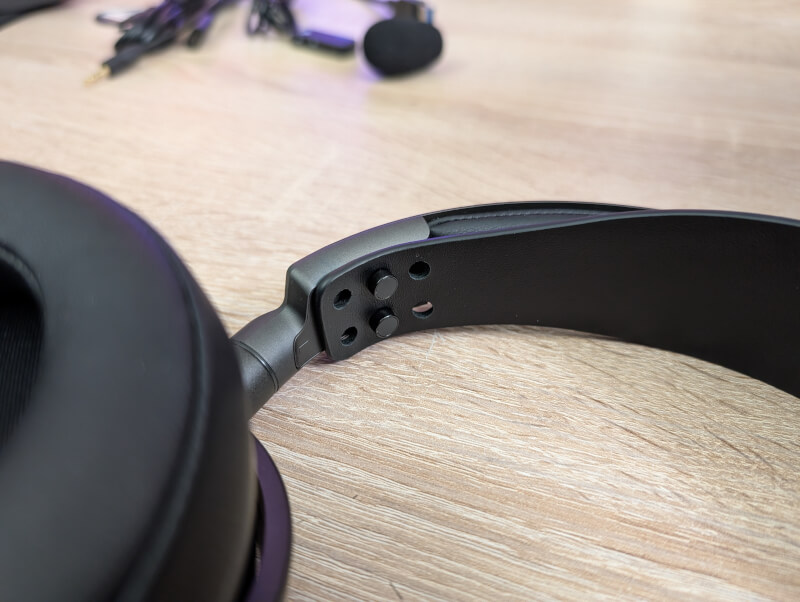
The ear cushions are soft and equipped with fake leather and memory foam. The ear cushions can be removed, so they are easy to clean if needed.
All controls are located on the left ear cup. On the outside there is a power button and a mute slider.
On the edge of the ear cup there is a volume wheel, another to adjust the chat balance, a 3.5 mm jack plug, USB C for charging, plug for the removable boom microphone and finally a button to change the level of the Audeze noise reduction on the microphone.
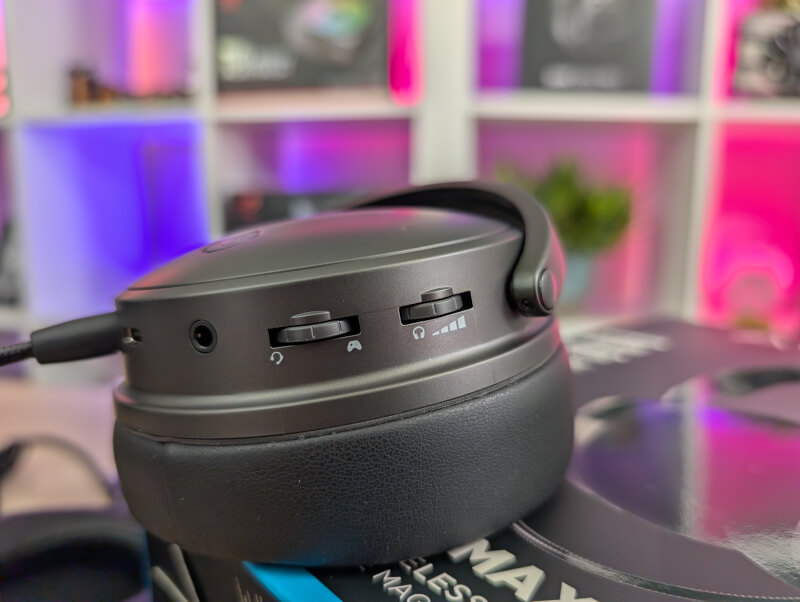
The detachable microphone is easy to put on or take off the headset and is connected with a 3.5 mm jack plug. The flexible boom arm is easy to adjust so you can get it positioned exactly where you want.
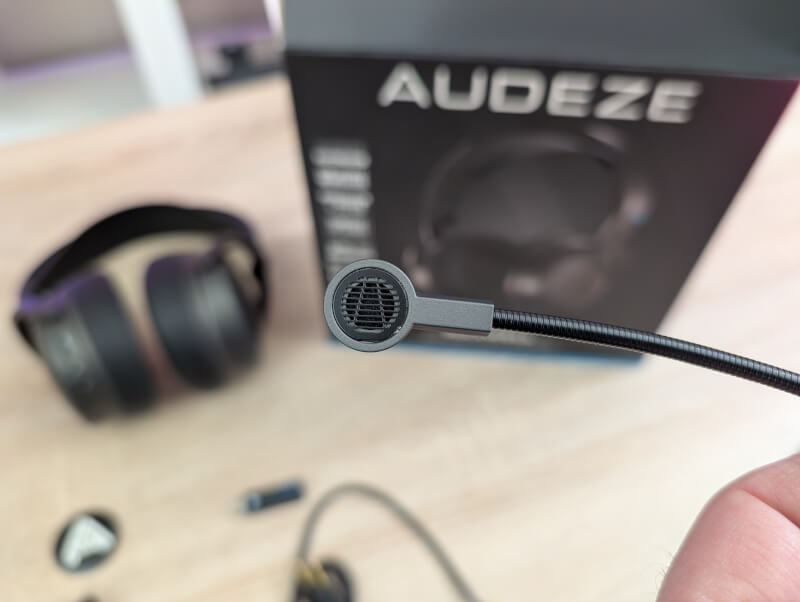
There is a dual microphone setup in the Maxwell Wireless. In addition to the removable, and somewhat better Hypercardioid boom microphone, there is also a smaller one built directly into the kit. It is very practical if, for example, you use the headset outside the home, connected to your phone.
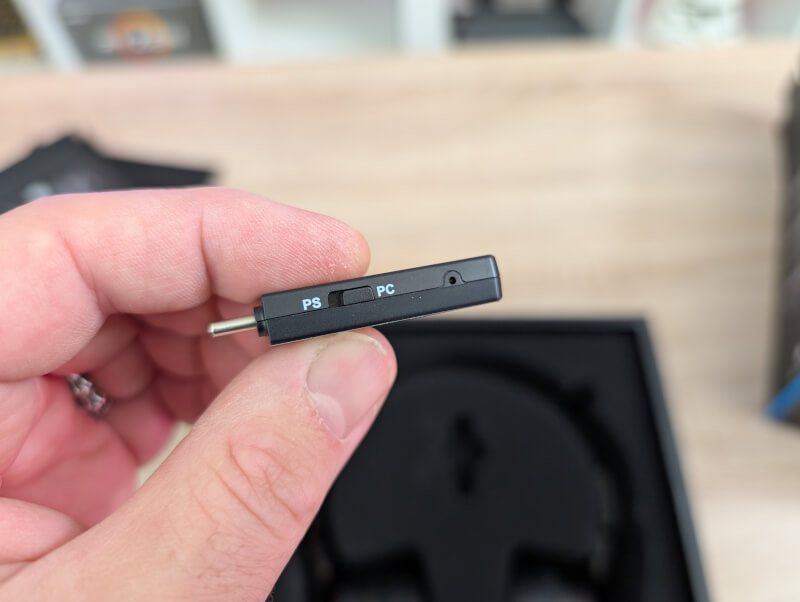
The included USB dongle for Maxwell Wireless is USB C and it has a small switch that you have to adjust, depending on whether you use it with PC or PlayStation. A small USB A to USB C adapter cable is also included in the box, along with a USB C cable for charging and finally a 3.5 mm jack cable if you want to connect devices of that type.
All in all, there are many connectivity options with Maxwell Wireless.
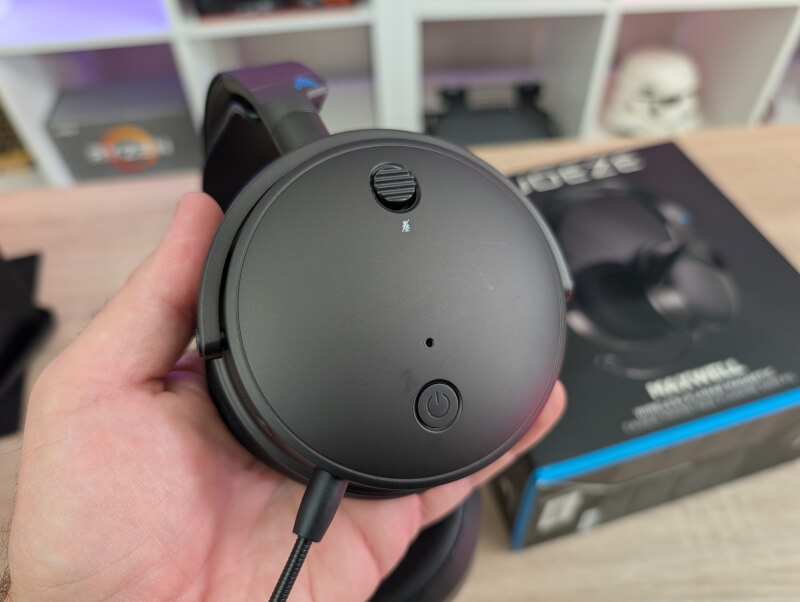
In terms of hardware, Maxwell Wireless also stands out. In part, the wireless connection via the included USB dongle is not via a 2.4 GHz connection, like most other wireless devices. Instead, Audeze has chosen to use an Ultra-Low Latency Wireless connection.
This means that the range is up to three times as long as with 2.4 GHz. Audeze also advertises low latency of around 20 milliseconds, but this is also possible on good 2.4 GHz solutions.
Another area where Maxwell Wireless stands out is with their large 90 mm Planar magnetic drivers.
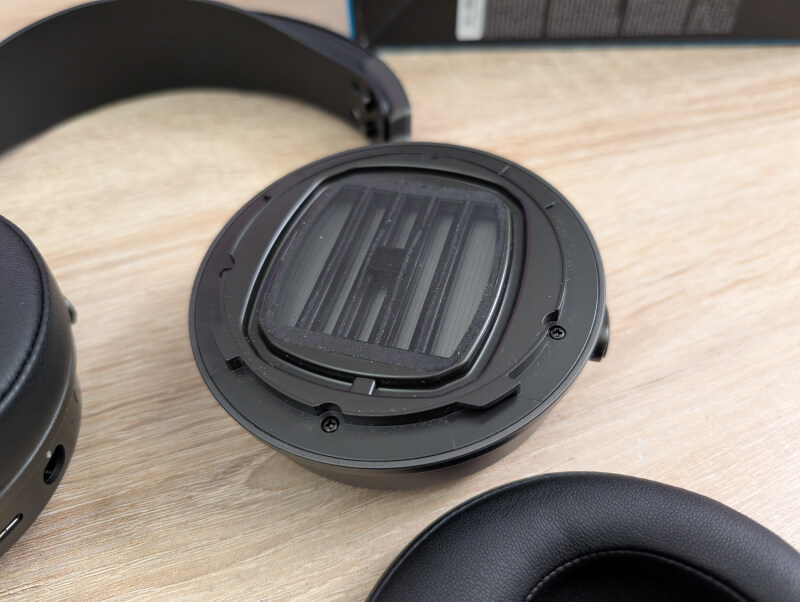
It is a completely different type of driver than the dynamic drivers used in the vast majority of headsets. The advantages of Planar magnetic drivers are that they have a faster response, are less susceptible to distortion and that in many cases they are better at representing the full sound spectrum.
The disadvantage is that they are typically expensive to make and then they are larger, which can also be seen in this one with a set of 90 mm drivers. Usually, large over-ear headsets typically come with 40-50mm drivers.
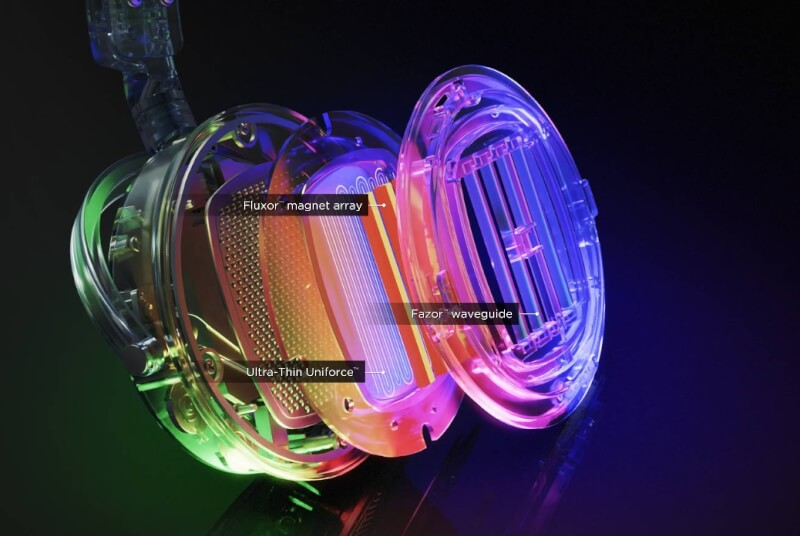
The large drivers along with the hardware and battery to power it all means we end up with a pretty heavy headset. The Maxwell Wireless comes in at 490 grams.
Software
Audeze has software for both PC and smartphone. In both places, you have the opportunity to check the status of your headset in relation to, for example, the battery. There is also access to EQ settings if you want to adjust things there. You can choose from a selection of predefined settings or you can customize your very own via a 10 Band EQ.
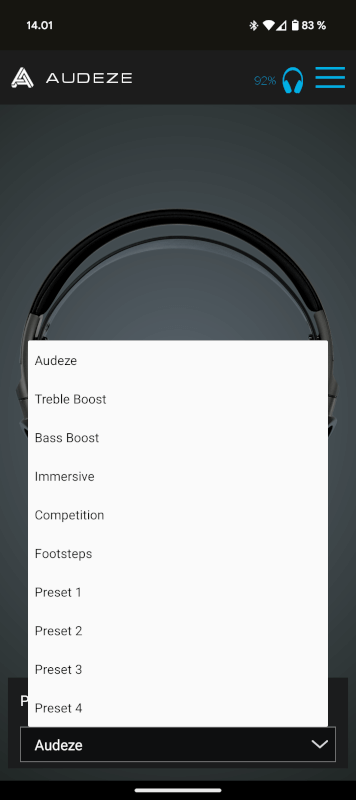
On PC, it is also possible to import other people's profiles if you want to.
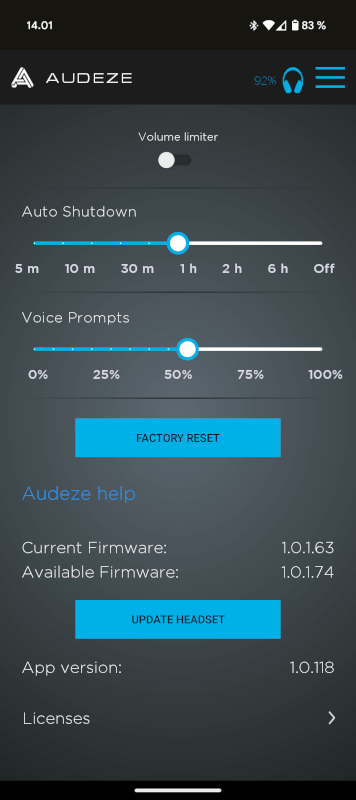
I did not experience any problems with the software during my test, on either PC or phone.
Testing
I have been using Maxwell Wireless for over a month now split between PC via the included USB Dongle and phone via Bluetooth.
In both cases, I have had no problems with connection and connection. Both parts have worked fine and stable.
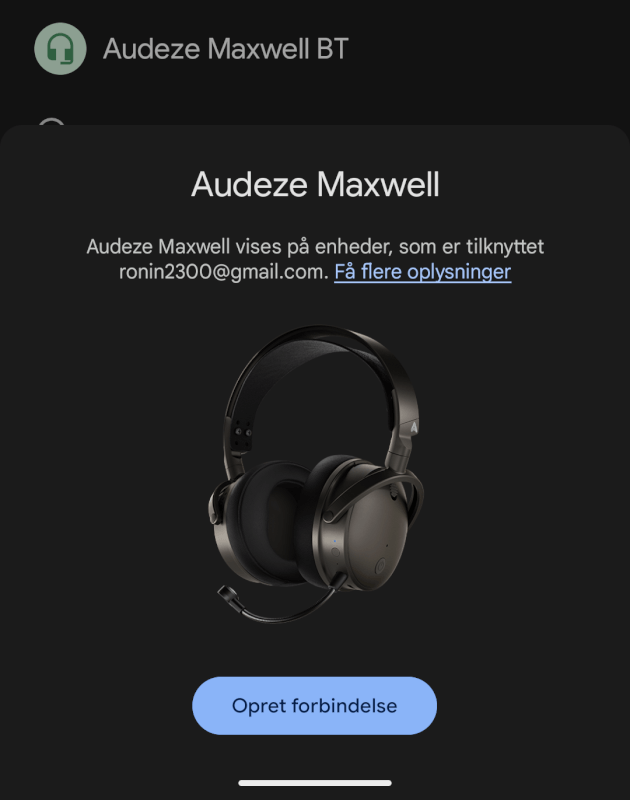
In relation to the Ultra-Low Latency Wireless connection on a PC, in normal use there is no noticeable difference between it and the 2.4 GHz connections you normally see. However, I found that it lived up to the longer range just fine. With Maxwell Wireless, I could easily move around the house without losing connection. Only when I started moving outside and thicker outer walls came between me and my PC did problems arise.
It's not because I typically experience range on a gaming headset as a problem, but it's nice to be able to go to the kitchen for something to drink without losing the connection.
It is possible to be connected to both dongle and bluetooth at the same time. So you can have a connection to your PC and, for example, play and still receive calls on your phone. However, it is only possible to hear the sound from one device at a time.
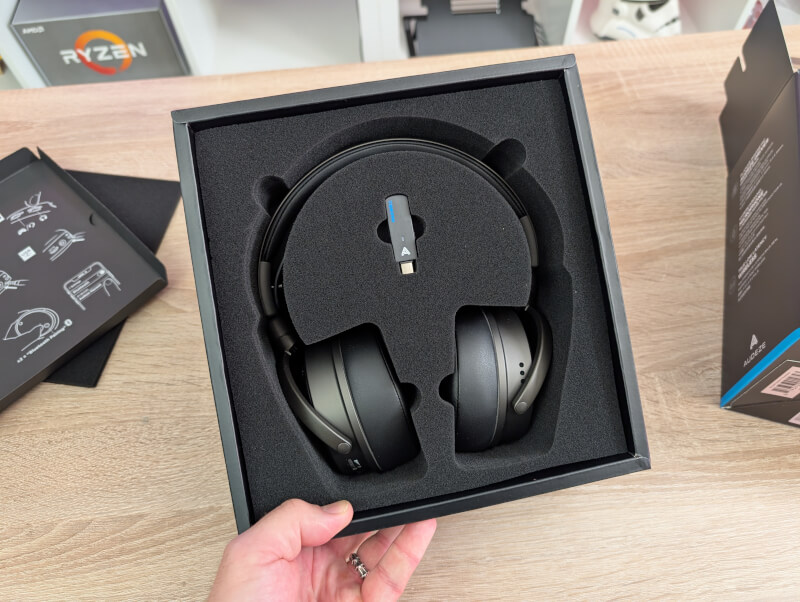
The sound experience on the Maxwell Wireless has been a real pleasure, and is definitely one of the best I have experienced on a wireless headset. Here, it certainly benefits the set that Audeze has chosen to bet on the large Planar magnetic drivers.
The width and depth of the sound image is fantastic and there is a razor-sharp separation, which means that you get even the smallest details and variations in sound and music.
It has been a delicious experience both in terms of music and gaming, where you get full value for the work the sound designers have put into their projects.
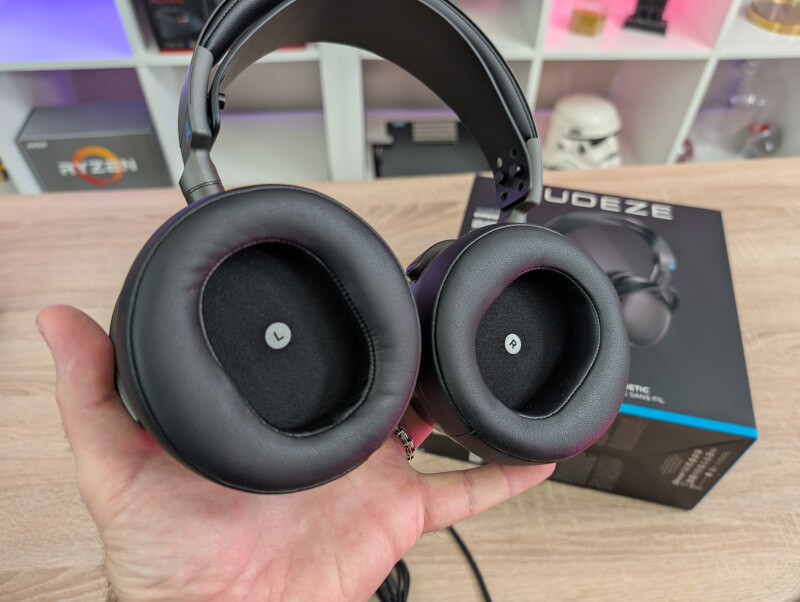
Unfortunately, I think the headset is on the heavy side. Longer use could well be a little strained. This is clearly the biggest weakness of the set, because the sound is so good that I want to keep wearing it.
Audeze itself states a battery life of up to 80 hours. It is very consistent with my experiences during the test. You can fully charge the set in about two hours, while you can get up to 25% in approx. 20 minutes.
The sound quality of the removable Hypercardioid microphone is really nice and my experience is that I have gone through clearly and distinctly in the games of online Space Marine 2 that I have played.
The quality of the smaller built-in microphone directly in the set is clearly worse, but is definitely usable for e.g. phone calls etc.
Price
At the time of writing, I can find the Audeze Maxwell Wireless in the PlayStation version with an online price of just under 400$.
So we are clearly in the high-end segment for wireless gaming headsets. It is in the same price segment as the Astro A50, which comes with different functionality in the form of connecting to multiple devices, etc.
However, for an audiophile headset, it is a very competitive price.
Conclusion
With the Maxwell Wireless, Audeze has created a headset that puts the sound at the center. All their energy has been spent on delivering the best possible sound image to us.
Where other manufacturers have worked on adding other features, such as connection to several devices, wireless charging, etc., this is the sound you pay for.
Maxwell Wireless has delivered one of the best sound images I have experienced with a wireless headset.
If you are looking for a headset with the sound at the center and you can live without many of the conveniences that other gaming headsets in this price segment offer, then I have not seen anyone that beats Maxwell Wireless on that front.
However, the good hardware also means that it is a heavy headset and here I wish that Audeze had made a little more of the comfort in the set. More padding on the headband might have fixed the problem for me.
We end up with a final grade of 9 and a Great Products Award, for a fantastic and complete headset, which is, however, heavy and lacks comfort a little.
The only reason we don't land a top score of 10 is comfort. However, I am also well aware that it is a very personal thing. If you haven't had problems with heavier headsets in the past, then you probably won't get wireless sound that's better than Audeze manages with Maxwell Wireless.
Benefits
- Great sound!
- Very stable connection
- Long battery life
Disadvantages
- Heavy


Latest headset
-
20 Octheadset
-
07 Marheadset
ASUS ROG Pelta
-
05 Marheadset
Razer Blackshark v2 X
-
27 Janheadset
Skullcandy Icon ANC
-
28 Novheadset
Razer Kraken V4 Pro
-
01 Novheadset
Audeze Maxwell
-
16 Octheadset
Logitech G Astro A50
-
04 Octheadset
ASUS ROG Delta II
Most read headset
Latest headset
-
20 Octheadset
Logitech G321 Lightspeed
-
07 Marheadset
ASUS ROG Pelta
-
05 Marheadset
Razer Blackshark v2 X
-
27 Janheadset
Skullcandy Icon ANC
-
28 Novheadset
Razer Kraken V4 Pro
-
01 Novheadset
Audeze Maxwell
-
16 Octheadset
Logitech G Astro A50
-
04 Octheadset
ASUS ROG Delta II






